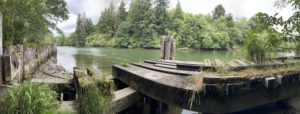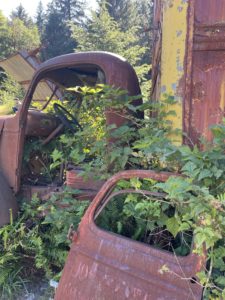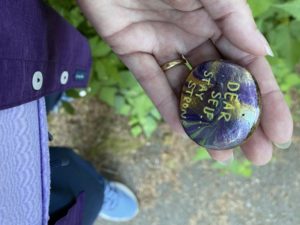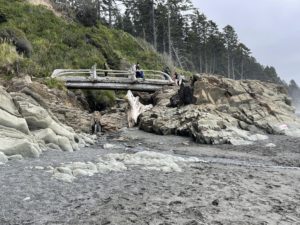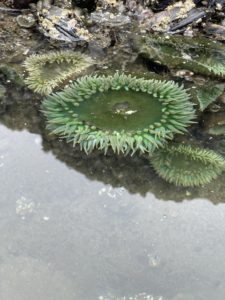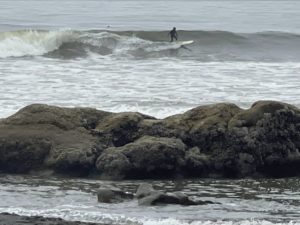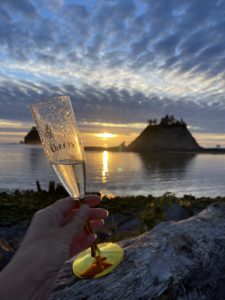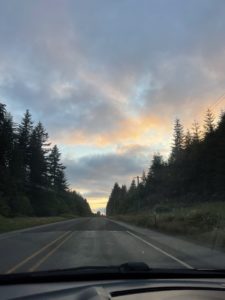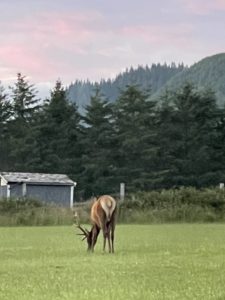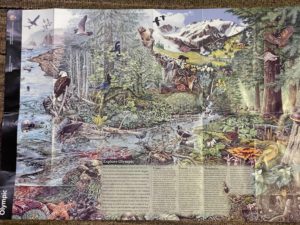
Where do I begin?
The Olympic National Park is hard to describe in one word. Diversity is not the first word that comes to mind, but it cannot be denied that the number of different biomes is incredible: Mountains and Alpine regions, Lakes, Lowland Forests and Rivers, the amazing Coast, and of course the temperate Rainforests are all here for one to see and explore. This park is a UNESCO World Heritage Site and International Biosphere Reserve. The almost 4 weeks we spent in the Peninsula wasn’t long enough, and we will definitely return again.
The Olympic National Forest covers over 633,000 acres and nearly encircles the entire Natl Park. There are tons of campgrounds here, but are best suited to smaller RVs (Class B Sprinters seems to be the majority) and some offer water, but none have electricity so this is ‘dry camping’ at it’s finest. Whenever we ultimately return to the ONP, we will likely rent a Sprinter Van so that we have the flexibility to immerse longer and more closely to the nature.
I have five separate albums of all the different days/regions we explored.
………………………………………………………………………………………………………………………………………
.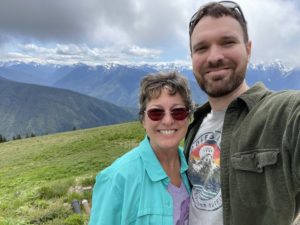
Hurricane Ridge
Spotted a Bear! Caleb and I made a day up in the alpine mountain top of Hurricane Ridge. At 5,242 feet, it is located 17 miles up a gently winding road from Port Angeles. At the top, we were met by a herd of deer, followed by a black bear tight out in the open and ran through a crowd of people!!!! We saw him every so often, walking parallel to the busy human-trekked path. Kinda’ scary to be so close, especially nervous for the people who have complete disregard and were oblivious to the dangers of wild animals. Fortunately, the sightings were without incident. Up on the ridge, it was hard to see anything because of heavy fog and rolling clouds; supposedly you can see Vancouver Island from here. The sun peeked out every so often, and the mountain range to the east/center of the Park were on full display with their snow-capped peaks.
Cool scenes included driving through a series of three tunnels, wildflowers sprinkled alongside the road, and the Overlook of Sequim below (the Dungeness Spit was unmistakable to spot!).
Hurricane Ridge pics (album 38)
………………………………………………………………………………………………………………………………………
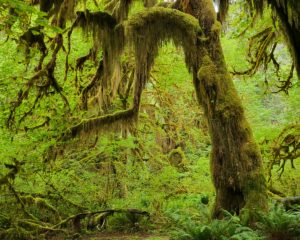
Hoh Rainforest
Enormous amounts of precipitation (12 feet a year!), mild winters and cool summers nurture the abundance of green everywhere. The drama of life, death and rebirth are all told in complex relationships. Yet it all feels as if the entire forest is one organism since everything just works together without intervention, and has done so for millennia. Plants grow upon plants in a dense carpet known as ‘epiphytes’, where moss, lichens, liverworts and ferns grow on tree branches. There are large old trees here over 500 years old. When they die, they continue to stand for another 200 years or so, providing habitat and life to many birds and insects. Once the trees finally fall to the forest floor, they serve as ‘nurse logs’, where mosses and seedlings colonize on them. It’s strangely beautiful. In fact, only one seedling in 10,000 survive the intense competition on nurselogs, and those that do often transform their roots into tendrils draped around the logs like an octopus. Another fun fact: coastal temperate rainforests in North America produce the largest accumulation of organic (living or once-living) matter on the planet, surpassing even the tropical rain forest!
The first series of pics in the linked alum below are from Rialto Beach. The beach was so pretty that we visited twice, the first time for sunset, and here again the next morning for a misty windy day.
We traveled down the road 6 miles to reach the cute little ONP Ranger Station gate, it looked like a little hobbit house. Then onto the Visitor Center which took a full 2 hours to reach due to the parking lot being full. But it was well worth the wait. Excitement grew as we approached the informational hut, they had posted not one but three different WARNING notices for aggressive animals in the area; one for Bear, one for Cougars, and one for Elk. Lucky we had our Bear Spray, but fortunate not to use it since we did not see any animals beyond tiny voles. Saw lots of birds and insects, and lots of Banana Slugs. For the Hall of Mosses Trail and a partial hike down the Hoh River Trail, we could not keep our jaws from gaping wide open.
Caleb was not with us for this day trip unfortunately, but he did manage to see the Quinault Rainforest a few days later.
Hoh Rainforest pics (album 42)
………………………………………………………………………………………………………………………………………………
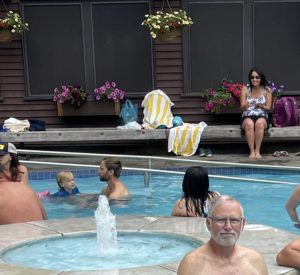
Sol Duc Hot Springs
Next up on our exploration of ONP was the Sol Duc Hot Springs area. The Sol Duc River features Chinook and Coho salmon who return to complete their lifecycle here. It’s one of the few places where salmon run in every season. We managed to reserve a 90 minute session slot at the Hot Springs Resort, something we had hoped to do after our hikes for the day, but it ended up being first on the agenda. The naturally hot mineral water was soothing. Not so much nice smelling however due to the sulpher. But the three hot pools (one at 98 degrees, one at 103, and one at 106 degrees) were relaxing and a fun thing to do.
Hikes in this area included the Sol Duc Falls (old-growth forest leading to a cascading waterfall), Ancient Groves (a half-mile loop through old-growth forest), and part of the Lover’s Lane trail.
Sol Duc Hot Springs pics (album 43)
………………………………………………………………………………………………………………………………………………

Quinault Rainforest
The Quinault Rainforest was something we managed to take in twice. One day of hikes just Jim and I, then a return visit to bring Caleb into the land of Yoda. We hiked the “Valley of the Rain Forest Giants”, where record setting evergreen trees of Douglas Fir, Sitka Spruce, Western Hemlock, and Cedars thrive. Massive trees, both in diameter and in height! Only redwoods and sequoias are larger.
There is a 31-mile Loop Road that parallels the Quinault River and meanders into ONP proper. This is the place for the Olympic Peninsula Waterfall Trail and most all of the Falls can be accessed with a short walk off the main road. We saw the Gatton Creek Falls, Willaby Creek Falls, Merriman Falls, Bunch Creeks Falls, and a few more; most of these spots were unmarked from the road so we had to rely on brochures which vaguely point you to their locations, unlike other national parks where attractions are hard not to miss (due to signs and parked cars).
The Quinault Valley’s magnificent centerpiece is Lake Quinault. The water, very similar to Lake Crescent, is clear, cold, and a beautiful shade of turquoise. More on this area in a later post for Album #47.
Quinault Rainforest pics (album 45)
………………………………………………………………………………………………………………………………………………
